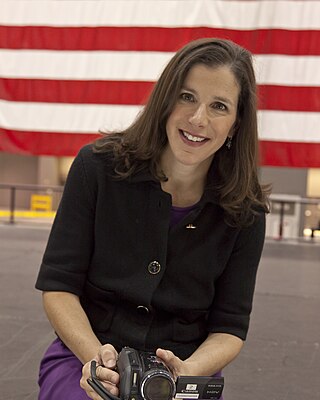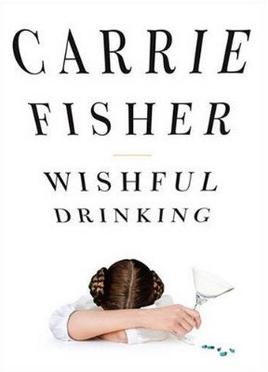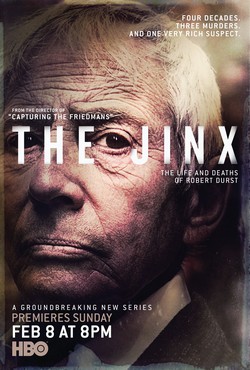Related Research Articles

Videotape is magnetic tape used for storing video and usually sound in addition. Information stored can be in the form of either an analog or digital signal. Videotape is used in both video tape recorders (VTRs) and, more commonly, videocassette recorders (VCRs) and camcorders. Videotapes have also been used for storing scientific or medical data, such as the data produced by an electrocardiogram.

Rodney Glen King was an African American man who was a victim of police brutality. On March 3, 1991, he was severely beaten by officers of the Los Angeles Police Department (LAPD) during his arrest after a high speed pursuit for driving while intoxicated on the I-210. An uninvolved resident, George Holliday, saw and filmed the incident from his nearby balcony and sent the footage, which showed the unarmed King on the ground being beaten after initially evading arrest, to local news station KTLA. The incident was covered by news media around the world and caused a public uproar.

A camcorder is a self-contained portable electronic device with video and recording as its primary function. It is typically equipped with an articulating screen mounted on the left side, a belt to facilitate holding on the right side, hot-swappable battery facing towards the user, hot-swappable recording media, and an internally contained quiet optical zoom lens.
America Undercover is a series of documentaries that aired on the cable television network HBO from 1983 through 2006. Within the series are several sub-series, such as Autopsy, Real Sex, and Taxicab Confessions.

Inside Deep Throat is a 2005 American documentary film about the 1972 pornographic film Deep Throat, at the forefront of the Golden Age of Porn, and its effects on American society.

John Nelson Sullivan was an American videographer who chronicled life in Downtown Manhattan’s arts and club scene from 1983 until his death. His hundreds of videos documented daily life in the city, wild nights out on the town, and private moments with his many famous friends — including RuPaul, Keith Haring, Sylvia Miles, Larry Tee, Susanne Bartsch, Tom Rubnitz, Lady Bunny, Michael Musto, Ethyl Eichelberger, John Sex, and Michael Alig.

Alexandra Corinne Pelosi is an American journalist, documentary filmmaker, and writer. She is a daughter of Nancy Pelosi, the former Speaker of the United States House of Representatives, and Paul Pelosi.

Home Box Office (HBO) is an American pay television network, which is the flagship property of namesake parent-subsidiary Home Box Office, Inc., itself a unit owned by Warner Bros. Discovery. The overall Home Box Office business unit is based at Warner Bros. Discovery's corporate headquarters inside 30 Hudson Yards in Manhattan's West Side district. Programming featured on the network consists primarily of theatrically released motion pictures and original television programs as well as made-for-cable movies, documentaries, occasional comedy, and concert specials, and periodic interstitial programs.
Douglas Gabriel Rotello is an American musician, writer and filmmaker. He created New York's Downtown Divas revues in the 1980s, was the co-founder and editor-in-chief of OutWeek magazine, became the first openly gay columnist at a major American newspaper, New York Newsday, and authored the book Sexual Ecology. He now makes documentaries for HBO, The History Channel and other networks.

I Am a Promise: The Children of Stanton Elementary School is a 1993 American documentary film about the pupils at Stanton Elementary School, an inner city school in Philadelphia. It was aired on HBO as part of its America Undercover series.

Jon Alpert is an American journalist and documentary filmmaker, known for his use of a cinéma vérité approach in his films.

World of Wonder Productions is an American production company founded in 1991 by filmmakers Randy Barbato and Fenton Bailey. Based in Los Angeles, California, the company specializes in documentary television and film productions with a key focus on LGBTQ topics. Together, Barbato and Bailey have produced programming through World of Wonder for HBO, Bravo, HGTV, Showtime, BBC, Netflix, MTV and VH1, with credits including the Million Dollar Listing docuseries, RuPaul's Drag Race, and the documentary filmsThe Eyes of Tammy Faye (2000) and Mapplethorpe: Look at the Pictures (2016).
Cathouse: The Series was an HBO television series that documented the professional lives of the workers at the Moonlite BunnyRanch, a legal brothel in Nevada. The 11 episodes of the first season were originally broadcast in 2005; 6 episodes of the second season aired two years later in 2007. The series was the direct successor of the HBO documentaries Cathouse (2002) and Cathouse 2: Back in the Saddle (2003), which also focused on the Bunny Ranch. On New Year's Day 2008 at 12:05 am, HBO aired a special episode of the series titled "Cathouse the Musical." Also in 2008, two standalone episodes aired - "Cathouse: Come to the Party" and "Best of Cathouse."

Twist of Faith is a 2004 American documentary film about a man who confronts the Catholic Church about the abuse he suffered as a teenager, directed by Kirby Dick. The film was produced for the cable network HBO and screened at the 2005 Sundance Film Festival. It received an Academy Award nomination for Best Documentary Feature.

Wishful Drinking is an autobiographical humor book by American actress and author Carrie Fisher, published by Simon & Schuster in 2008. Fisher's book was based on her one-woman stage show, which she developed with writer/director Joshua Ravetch.
Cynthia Wade is an American television, commercial and film director, producer and cinematographer based in New York City. She has directed documentaries on social issues including Shelter Dogs in 2003 about animal welfare and Freeheld in 2007 about LGBT rights as well as television commercials and web campaigns. She has won over 40 film festival awards, won an Oscar in 2008, and was nominated for her second Oscar in 2013.
The Fortunoff Video Archive for Holocaust Testimonies is a collection of recorded interviews with witnesses and survivors of The Holocaust, located at Yale University in New Haven, Connecticut. Approximately 4,400 videotaped interviews are deposited with the Yale University Library and housed in Sterling Memorial Library.

The Jinx: The Life and Deaths of Robert Durst is a 2015 HBO documentary miniseries about New York real estate heir Robert Durst, a convicted murderer. It was written by Andrew Jarecki, Marc Smerling, and Zac Stuart-Pontier.

Catch and Kill: The Podcast Tapes is an American documentary television miniseries, directed and produced by Randy Barbato and Fenton Bailey. It follows Ronan Farrow, as he conducts interviews with whistleblowers, victims, private investigators and sources for his book Catch and Kill. It consists of 6-episodes and premiered on July 12, 2021, on HBO.
Small Town News: KPVM Pahrump is an American documentary miniseries. It follows news station KPVM-LD in Pahrump, Nevada, as they take on the challenge of expanding into the Las Vegas market. It consists of 6 episodes and premiered on August 2, 2021, on HBO.
References
- 1 2 Gross, Michael Joseph (April 13, 2003). "Film; The Kings and Queens of the Gay High School Prom". The New York Times. Retrieved September 10, 2021.
- ↑ Hendrickson, Paula (December 12, 2012). "Relationships with nets, execs run deep". Variety. Retrieved September 10, 2021.
- 1 2 Rosenberg, Howard (December 14, 1993). "TV Reviews: 'Shock Video' a Show Worth Watching". Los Angeles Times. Retrieved September 10, 2021.
- ↑ "HBO's 'Shock' view of video" . USA Today. December 14, 1993. Retrieved September 10, 2021– via NewsLibrary.
- 1 2 3 4 5 Voros, Drew (December 13, 1993). "Shock Video". Variety. Retrieved September 10, 2021.
- 1 2 "The 'Shock' of the home-video revolution" . New York Daily News. December 13, 1993. Retrieved September 10, 2021– via Newspapers.com.
- 1 2 "Productions Archive". World of Wonder. Archived from the original on April 26, 2005.
- ↑ Gardner, Chris (August 9, 2021). "World of Wonder Turns 30: Producing Partners Reflect on Punk Origins and 'RuPaul's Drag Race' Success". The Hollywood Reporter. Retrieved September 10, 2021.
- ↑ "Welcome to Wonderland". Television Academy. Retrieved September 10, 2021.
- ↑ "HBO Looks at Video Impact on Our Lives" . Chicago Sun-Times. December 13, 1993. Retrieved September 10, 2021.
- 1 2 "Be Careful: Camcorders May Be Pointed At You" . Latrobe Bulletin. Associated Press. December 30, 1993. Retrieved September 10, 2021– via Newspapers.com.
- 1 2 3 Endrst, James (December 6, 1993). "HBO's View of the Dark Side of Our Video Future". Hartford Courant. Retrieved September 10, 2021.
- ↑ Goodman, Walter (December 14, 1993). "Review/Television; The Vigilantes of Video And Life as Sound Bites". The New York Times. Retrieved September 10, 2021.
- ↑ ""Shock Video" Offers Little Redeeming Value" . The Virginian-Pilot. December 14, 1993. Retrieved September 10, 2021.
- 1 2 Goodman, Walter (July 13, 1995). "Television Review; Courtroom Superstars, Videotaped Confessions". The New York Times. Retrieved September 10, 2021.
- 1 2 3 Loynd, Ray (July 13, 1995). "America Undercover Shock Video 2: The Show Business of Crime and Punishment". Variety. Retrieved September 10, 2021.
- 1 2 Koehler, Robert (July 15, 1995). "TV Review : 'Shock Video 2' Looks at Crime". Los Angeles Times. Retrieved September 10, 2021.
- 1 2 3 "'Shock Video 2' is schlock video, too" . New York Daily News. July 14, 1995. Retrieved September 10, 2021– via Newspapers.com.
- 1 2 3 Shales, Tom (July 15, 1995). "Shock Video': At the Scene of the Crimes". The Washington Post. Retrieved September 10, 2021.
- ↑ Lowry, Brian (November 22, 1997). "Raunch! Sex! Danger! Here!". Los Angeles Times. Retrieved September 10, 2021.
- ↑ "Sex Makes Fools of Us All, and HBO's 'Shock Video' Helps Fan the Flames" . The Buffalo News. December 16, 1996. Retrieved September 10, 2021– via NewsLibrary.
- ↑ Sterngold, James (April 15, 1998). "Arts in America; HBO Programmer Likes to Kindle Both Heat and Light". The New York Times. Retrieved September 10, 2021.
- 1 2 3 Nickell, Ron-Luc (2006). Send in the Cones: the Cruise Ship Letters. 10-4 Communications Press. pp. 38–39. ISBN 978-1-4116-7359-5 . Retrieved September 10, 2021.
- ↑ "Old forum luring new viewers: Erotic shows hit cable, networks" . The Palm Beach Post. July 12, 1996. Retrieved September 10, 2021– via Newspapers.com.
- ↑ Armour, Terry (September 1, 2002). "'Vagina Monologues' producer casts wide net". Chicago Tribune. Retrieved September 10, 2021.
- ↑ "Shock Video 2004: Too Hot for the Box". TV Guide. Retrieved September 10, 2021.
- ↑ "Prime Time" . Rocky Mount Telegram. December 4, 2004. Retrieved September 10, 2021– via Newspapers.com.